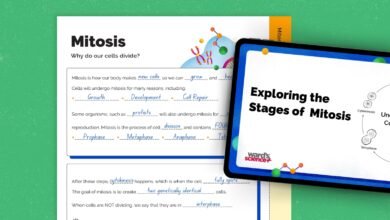15+ Ways To Build Positive Teacher-Student Relationships

When students and teachers connect on a personal level, everyone benefits. We know these positive relationships can’t solve every problem that will arise in our classrooms, but they do support academic success, motivate students, and improve everyone’s mental health. That’s why we worked with our friends at Solution Tree to compile this collection of simple ways to build and maintain positive teacher-student relationships. Find more relationship-building and other professional development ideas from Avanti by Solution Tree here.
Building Positive Teacher-Student Relationships
At a time when schools are facing teacher shortages, funding deficits, and other major education challenges, working to build positive teacher-student relationships may be more important than ever before. In fact, creating a safe, supportive, and collaborative culture is the first level of the High Reliability Schools (HRS) framework, a method of improving schools through research-backed practices. As elementary principal Bo Ryan notes in a blog post for Avanti, this framework can help schools succeed in the most challenging of times. Try these ideas to build relationships and create a supportive culture.
1. Know and use your students’ names
It sounds so basic, but it really does matter. Make the effort to learn each of your students’ preferred names as soon as possible each school year. Be sure to learn to pronounce them correctly, and avoid using nicknames they haven’t chosen for themselves. Then, take the time to get to know a little more about them. Back-to-school icebreakers and “Would You Rather” questions can be a terrific start.
Learn more: How To Learn All Your Students’ Names on the First Day of School
2. Greet them personally
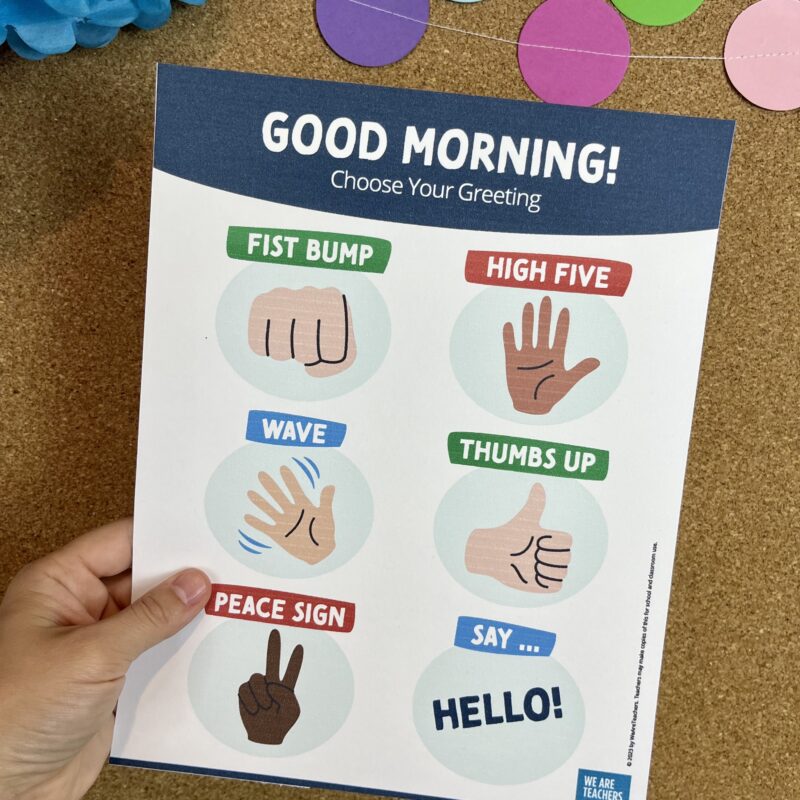
Try to say hello to as many students as possible each day. Making them feel seen also helps them feel more accountable for their actions and behaviors. For younger kids, try greeting each personally on their way into the classroom with a high-five, wave, or other method of their choosing. For older students, stand in the halls for a few minutes before and after school and say hi to those walking by. A little eye contact and small talk can go a long way toward building relationships.
Learn more: Use This Free Classroom Greeting Sign To Welcome Students in the Morning
3. Embrace recess and lunchroom duty
These duties usually make teachers groan, but try to see them in a different light. This is your chance to chat with lonely students, keep an eye out for looming problems, or even just enjoy watching them have a good time together as they run around and play. Sometimes it’s even easier to build positive teacher-student relationships outside of the classroom.
Learn more: Recess Duty and 5 Other Moments Busy Teachers Should Prioritize
4. Recognize the whole student
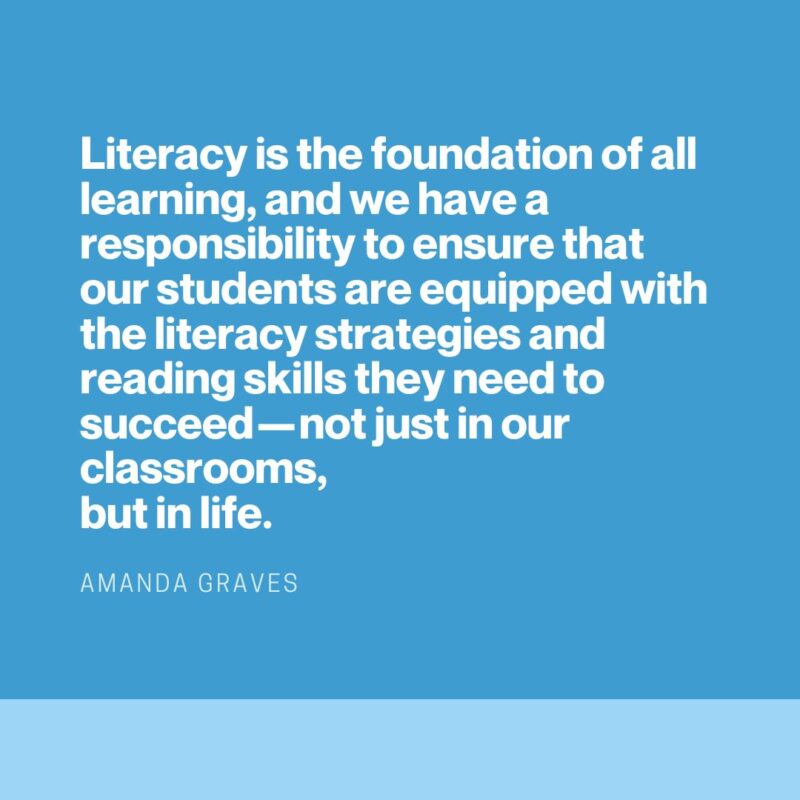
Every student spends much more of their life outside of your classroom than in it. Each student brings their own background, circumstances, and personalities with them to school each day, and the more you know about those facets, the better you’ll be able to connect with them. And that doesn’t just mean their personal lives—make the effort to know how your students are doing academically across the board. The folks at Avanti highlight the example of a Spanish teacher who made an effort to help her students with their literacy skills, reaping academic and personal benefits along the way.
Learn more: The Heart of Education: Every Teacher’s Strong Influence in Literacy at Avanti by Solution Tree
5. Get involved in the school community
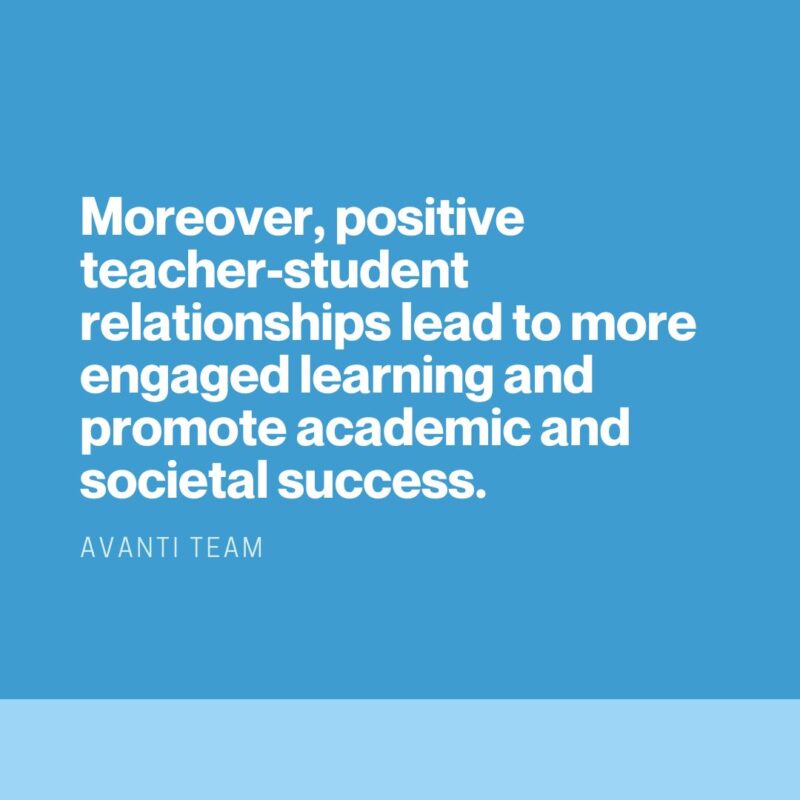
Avanti has lots of helpful tips for new teachers looking to build strong student relationships, including making an effort to become a part of the wider school community. Attend sports events, buy tickets to the fall play, check out student work posted in common areas, and support fundraisers (if you’re able to). If you’re up for it, you might even consider coaching a team or serving as an advisor to a club or organization.
Learn more: Tips for New Teachers on Building Positive Relationships With Students at Avanti by Solution Tree
Maintaining Positive Teacher-Student Relationships
Once you’ve started to build these relationships, it’s important to maintain them inside and outside the classroom. Avanti offers these five simple tips for building and maintaining better relationships with your students. Here’s how to use them.
6. Use active, whole-body listening
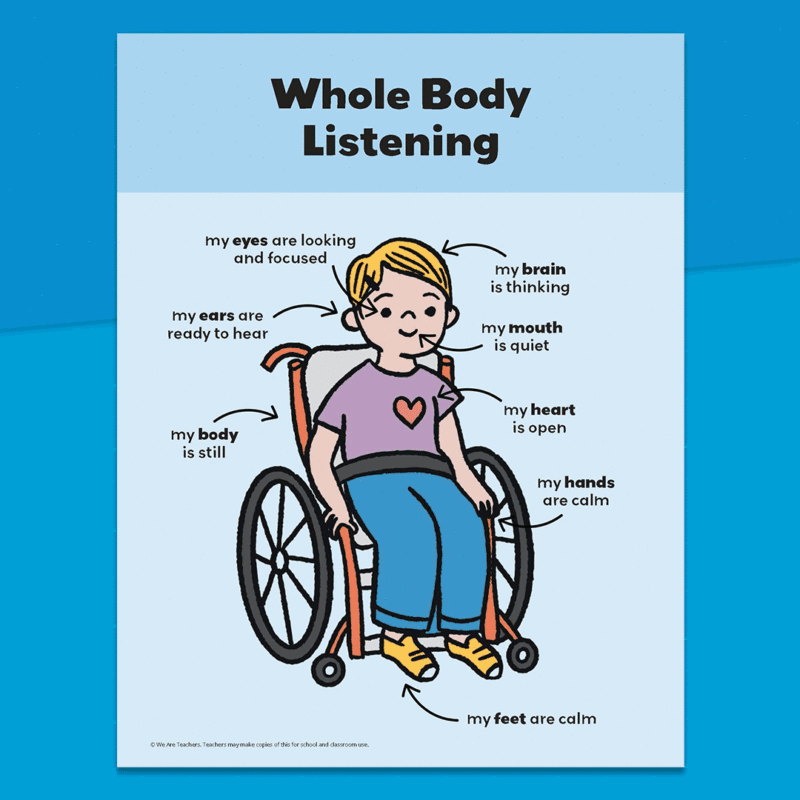
When you’re interacting with students, be a good listener. Make eye contact and give them your full attention. This can be a real challenge because teachers are often the ultimate multitaskers. But students know when you’re really listening and when you’re not, and they’ll trust you accordingly. Plus, when you model strong active listening, students will learn to use it in return.
Learn more: 10 Ways To Practice Inclusive Whole Body Listening
7. Share a laugh with appropriate humor
For most people, a shared sense of humor is one of the most important requirements in any type of relationship. While you may not always laugh at the same things your students do (seriously, why do they find body noises so hilarious?), sharing a giggle can really help forge connections. Just remember to keep your humor age-appropriate, and don’t put students down for a laugh. Instead, focus on things you can find funny together.
Learn more: 25 School-Appropriate Funny Videos for Kids When You Have 5 Free Minutes
8. Practice regular self-care

Sympathy and empathy are important elements in building positive teacher-student relationships. But if you don’t practice self-care, you won’t be able to offer care to others. We can’t build positive teacher-student relationships if we’re burned out, sick, or exhausted. The experts at Avanti recommend using self-monitoring strategies on a regular basis, like journaling and setting a daily intention. You can also model self-care practices for your students, like taking a deep breath when you’re upset or inviting everyone up for a physical brain break when you’ve been working hard for too long.
Learn more: Five Self-Monitoring Strategies for Building Student Relationships at Avanti by Solution Tree
9. Employ meaningful, constructive discipline
One mistake teachers sometimes make in student relationships is worrying they’ll destroy the connection if they have to discipline the student. But healthy relationships require both participants to follow the stated and unstated rules. The key to maintaining your connection while disciplining a student is being empathetic but firm, and tailoring any punishment so it’s meaningful. Taking away recess from a rowdy kid will just make them resentful (and eliminate their chance to use up their excess energy). Try to understand the reasons behind bad behavior, and your student relationships will thrive.
Learn more: 10 Ways To Discipline Students Without Taking Away Recess
10. Demonstrate trust through student responsibilities
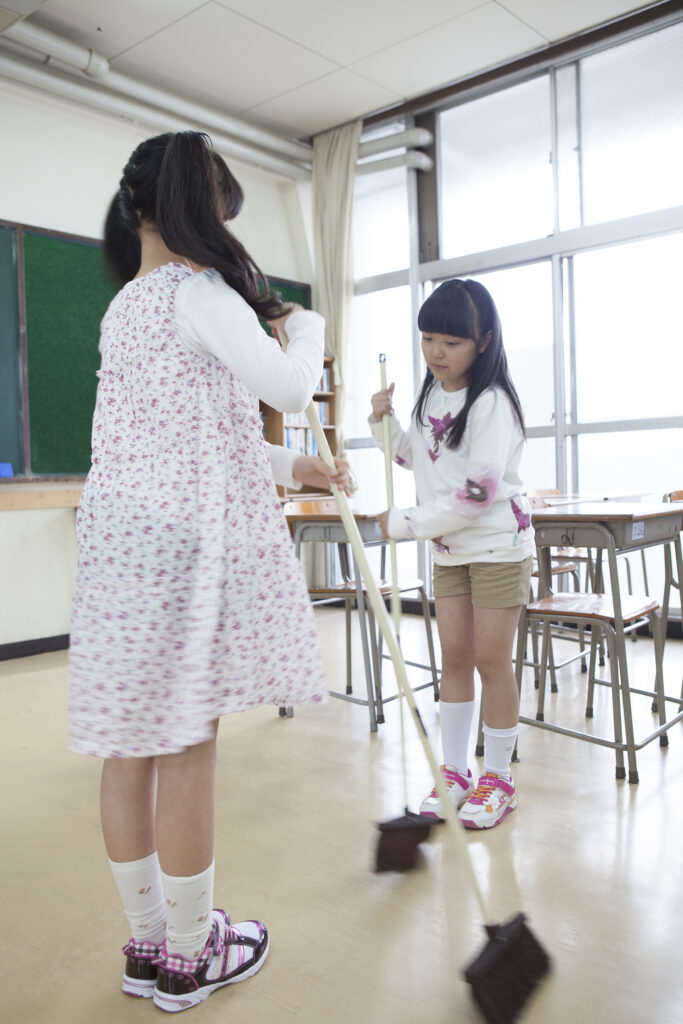
Showing students you respect and believe in them is a major part of building relationships. In younger classrooms, teachers often assign classroom jobs to each student. This simple practice builds a sense of responsibility while also showing the kids their teacher trusts them with duties big and small. Middle and high school teachers can do the same, adapting responsibilities to fit older age groups.
Learn more: The Big List of Classroom Jobs for Pre-K to Grade 12
Deepening Teacher-Student Relationships
Looking for ways to go the extra mile and really connect with your students? Give these ideas a try.
11. Embrace student feedback
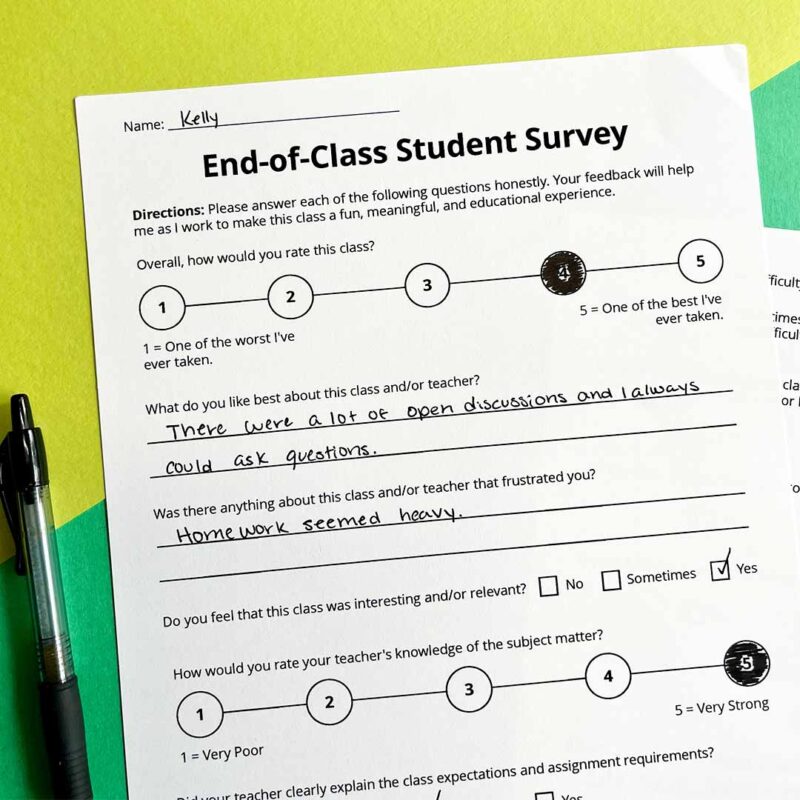
No matter how long you’ve been teaching, student feedback can feel terrifying. But it’s a really terrific way to understand your students better. Even anonymous feedback lets you know the general mood in the room, giving you an idea of how strong your relationships really are. Giving students a voice in your classroom is one easy way to build positive teacher-student relationships. Don’t be afraid to embrace that feedback—you can’t grow until you know!
Learn more: Free Printable Student Perception Survey
12. Hold regular individual conferences

This idea comes from the Avanti team, and while it takes a little effort, it’s a real game changer. Holding Individual conferences directly with students (no parents generally involved) gives you the opportunity to build authentic relationships. “My students adore participating in individual conferences. It keeps our dialogue going on a level they might not consistently achieve within a larger class setting,” says teacher Jen Cullerton Johnson.
Learn more: Six Steps for Successful Individual Conferences With Students To Build Better Relationships at Avanti by Solution Tree
13. Use social media (appropriately)
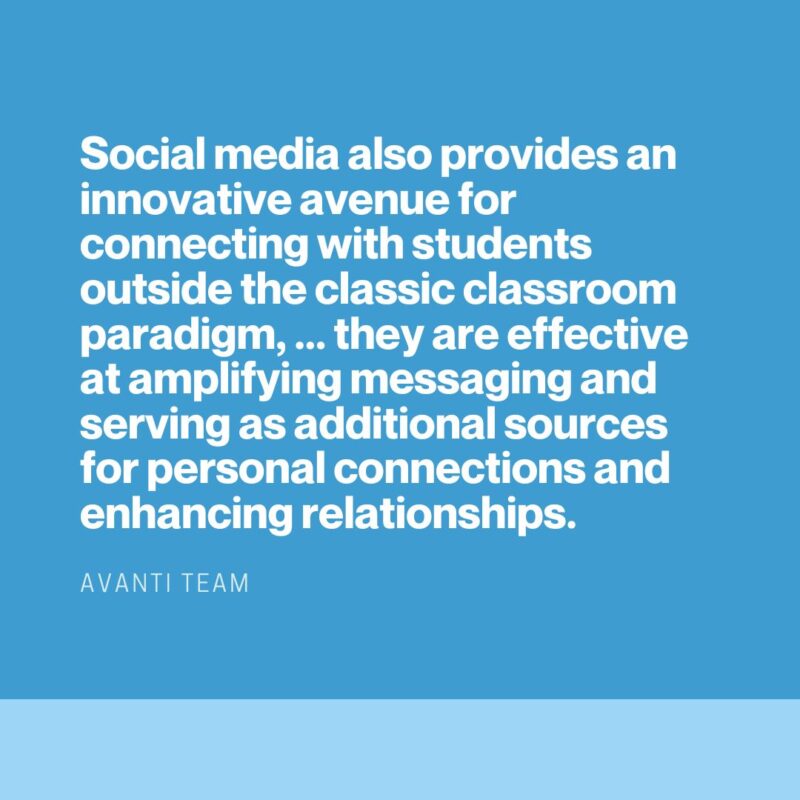
This is a fine line to walk, but using a little social media can help you meet students where they are. Rather than “friending” all your students online, Avanti recommends working social media into your learning environment instead. For instance, you could create a private Facebook or Instagram chat group for your class where parents and/or students can post questions and show off their work. Or offer students the chance to make a video for YouTube or TikTok instead of doing a standard report. Today’s kids often live on social media, so use it to connect with them.
Learn more: Social Media Strategies for Strong Teacher-Student Relationships at Avanti by Solution Tree
14. Reflect on your relationships

Journaling in and out of the classroom has a lot of benefits for students and teachers. One way to use your personal journal is to reflect on your relationships with your students. Think about what’s going well and where you’ve hit a few speed bumps. Consider whom you find it hard to connect with and brainstorm ways to overcome those challenges. This is one of three relationship-building strategies recommended by Avanti; see the others at the link.
Learn more: Three Strategies and Five Activities To Build Relationships With Your Students at Avanti by Solution Tree
15. Advocate for students

As the folks at Avanti know, empowered teacher voices can have a real impact on overall school success. One way to use your voice is to stand up for students who need support. This could mean advocating for equitable dress code changes, or urging a new look at a student who’s gotten a bad reputation but wants to change. Find your teacher voice and use it to make a difference.
Learn more: The Powerful Impact of Teacher Voice on School Success at Avanti by Solution Tree
16. Invite students back to visit
Your relationship with your students doesn’t have to end when they leave your classroom. Longtime teachers treasure visits from their former students, whether it’s a year or a decade later! When your current students see how close you still are to those that came before them, they’ll recognize that they have a teacher who really does care about them, now and in the future.
Learn more: Once You’re My Student, You’re Always My Student
Navigating Difficult Student-Teacher Relationships
Is it worthwhile to build and maintain these relationships? Yes. Is it always easy? No way. There are some kids who push your buttons in all the wrong ways, and others who want to get closer than they should. Use these strategies to navigate your trickiest relationships.
17. Establish and enforce healthy boundaries
Decide on boundaries that apply to all students, and then enforce them. For instance, you might say that students can only contact you via your email (no texting or social media DMs), and on weekends you’ll only check that email once. If you welcome students to drop by before or after school but consider your solitary lunchtime and planning period sacrosanct, that’s OK! Establish your boundaries and then hold firm.
Learn more: How To Set Boundaries as a Teacher Without Feeling Mean
Visit Avanti by Solution Tree today for an exclusive free offer for teachers!
Get even more helpful tips, solutions, and growth with convenient, personalized, and professional learning. Sign up for five free downloads from the Avanti by Solution Tree library of downloadable resources, hundreds of videos, and livestreams. Earn certificates of completion for completing tasks based around topics you choose, created by educators just like you.
Source link


